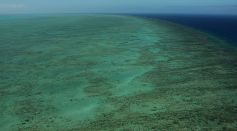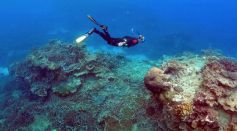Tags: Coral Reefs

Coral Reef Health Gets New Model for Mapping, Monitoring; Shortlists Factors and Identifies Which Reefs Might Survive

Did This Coral Just Swallowed an Algae? New Marine Symbiosis Observed for First Time
Shark Scales Reveal Decline of Ancient Predator's Abundant Population Before Human Destruction
Marine Biologists Develop Heat-Resistant Coral to Save Great Barrier Reef

New Sunscreen Ingredient Gives UV Protection, Swimmers Not Harming Coral Reefs

Ashmore Reef Marine Park in Australia Navigated, Mapped in Landmark Study

Why Coral Reefs Turn White? Science Explains
Seaweed-Eating Crabs Could Help Save Threatened Coral Reefs
3D Printing Helps Rehabilitate Vital Coral Reefs in Hong Kong
Coral Reef Restoration Needs Researchers Help

Climate Change Surviving Corals Found, Scientists Gain New Hope
Viruses and Bacteria Can Infect Corals and Trigger Bleaching

The Great Barrier Reef Has Declined By Half, New Study Shows
Tiny Polynesian Islands May Not Be Threatened by Climate Change After All: New Study Gives Better Perspective
Corals Emit Own Display of Colorful 'Sunscreen' to Fight Back Against Bleaching

NASA’s NeMO-Net Game Allows Player to Help Map Endangered Coral Reefs; A Fun Approach in Fighting Against Global Warming

Stony Corals Are About to Go Extinct

Scientists Made Coral Reefs Sound Health And The Fish Came Back
Florida Coral Reefs Dying And It’s Not Just Climate Change
Coral Disease Claims Reefs Around Florida
Most Popular

Recycling Myths vs Facts: What Actually Gets Recycled and How to Do It Right

Allergies Explained: What Happens in Your Body During an Allergic Reaction

What Is Conservation Biology? Key Strategies to Protect Species and Habitats

Types of Pollution: Air, Water, Soil, Noise, and Their Health Effects




